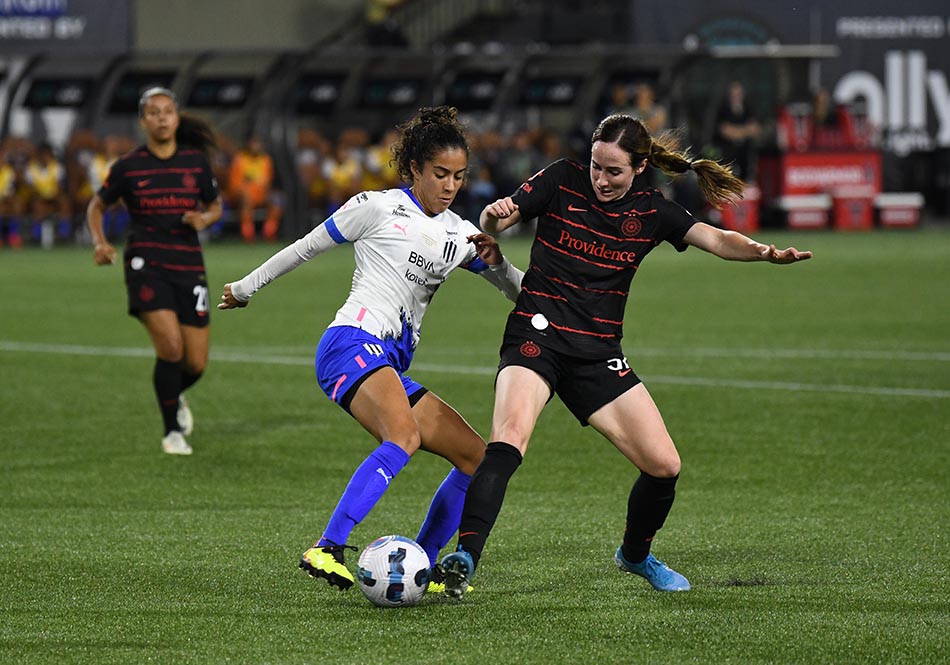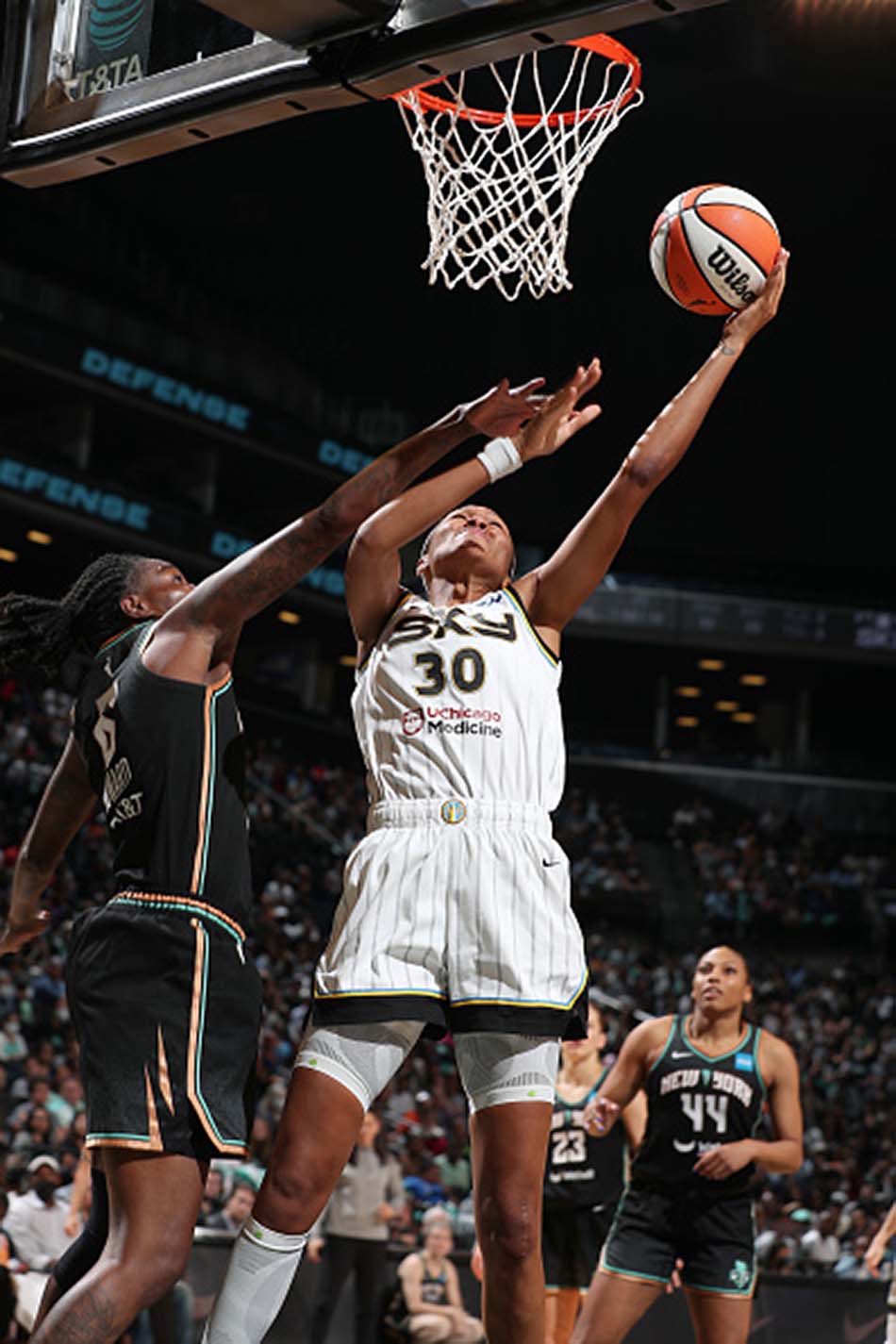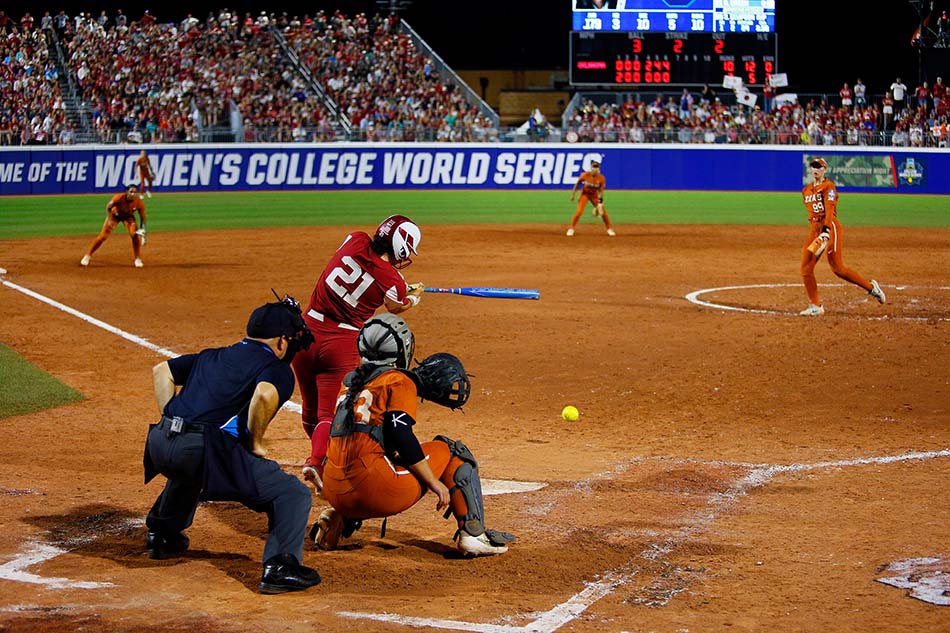Cover Story: A TV Field of Their Own
Women’s sports are getting unprecedented airtime, audiences

As the U.S. continues to celebrate the 50th anniversary of the landmark Title IX legislation that greatly expanded women’s sports opportunities, TV is paying homage by offering an unprecedented amount of live women’s sports content across linear and digital platforms.
More live college and professional women’s sports events this year are finding homes on the major linear TV networks and streaming services than at any time before, and viewers and sponsors have responded in the way the programmers have hoped they would.
Industry executives said the celebration of the landmark Title IX legislation — which prohibits sex-based discrimination in any school or educational program that receives funding from the federal government — along with the continued appeal and demand of live sports programming in a crowded television environment and an overall increase in media coverage of quality women’s sports competition has helped create the right conditions for growth.
“We’ve always said it’s such an underrepresented and undersold product that has a ton of upside and potential, so it’s great to finally see that it’s taken an upswing, and the numbers and data back it,” two-time FIFA Women’s World Cup soccer champion Julie Foudy said.
The amount of women’s sports programming on television has grown strongly over the past few years as interest in the events have grown and more distribution outlets are available to showcase them.
➤ CBS Sports over the past decade has increased women’s sports programming by 50% (by 200% over the past five years) on its linear CBS Sports Network, showcasing such premier properties as the National Women’s Soccer League, Ladies Professional Golf Association events and Women’s National Basketball Association games.
“We’re doing more in this space than we’ve ever done across our linear and digital platforms,” CBS Sports executive VP of programming Dan Weinberg said. “All of our [properties] are featuring the best athletes in the world, unbelievable athleticism, dynamic performances on the court and on the field, which makes for good television.”
Broadcasting & Cable Newsletter
The smarter way to stay on top of broadcasting and cable industry. Sign up below
➤ Fox Sports has doubled its on-air women’s sports fare since 2017, mainly through the 2019 Women’s World Cup coverage and increased college sports events.
➤ ESPN aired more than 25,000 hours of women’s sports programming across its platforms from the period of September 2021 to June 2022, up 50% from the same period a year prior, according to network officials.
➤ On the streaming side, Amazon Prime Video holds exclusive rights to offer the WNBA’s Championship Cup midseason tournament finals, while NBC-owned Peacock last month aired exclusively every stage of the first Women’s Tour de France competition in 33 years.
A More Varied Menu
While women’s sports events like pro and college basketball, pro golf and tennis, and Olympics-themed sports like gymnastics and ice skating have dominated the women’s TV sports landscape in terms of popularity and ratings, network executives say other sports such as college softball, lacrosse and ice hockey are finding an audience of passionate and rabid fans.
Women athletes are also delivering big punches in the combat sports arena. In June, champions Amanda Serrano and Katie Taylor faced off in the main event of a DAZN-streamed pro boxing matchup at New York’s Madison Square Garden — the first time two women headlined a major boxing event in the legendary arena’s history. A month later in the octagon, mixed-martial-arts champions Julianna Pena and Amanda Nunes headlined pay-per-view event UFC 277 in one of the most-anticipated fights of the year.
“There’s so much more to women’s sports than just a single note, and the increased accessibility of the content puts wind behind a lot of other sports in addition to women’s basketball,” ESPN president of content and original programming Burke Magnus said.
That increase has paid off for ESPN and ABC in terms of increased viewing for such events. ESPN’s May 29 North Carolina-Boston College women’s lacrosse championship drew a network record 428,000 viewers for the sport, while the June Oklahoma-Texas softball Women’s College World Series championship averaged 1.6 million viewers, according to the network. ESPN’s August Little League Softball World Series also set a network record for the sport, averaging 294,000 viewers across ESPN and ESPN2, the network said.

On the professional side, WNBA regular-season coverage on ESPN and ABC posted a 19% year-to-year audience increase, with 2022 finishing as the league’s most-watched season on the Disney-owned networks since 2008, according to Nielsen.
ESPN’s ratings success is due in part to the network’s long-running focus on women’s content, Magnus said. “We put 20 years of sweat equity in building college sports programming into something that is really, really meaningful and is drawing huge audiences,” he said.
NBC Sports has also been cultivating women’s sports for decades, dominated by its Summer and Winter Olympics coverage. NBC Sports said its Olympics coverage every two years provides NBC with the most broadcast network hours of women’s sports.
NBC Olympics Production president and executive producer Molly Solomon pointed to the network’s coverage of the 1996 Summer Olympics as a turning point for women’s sports on TV. Several teams and athletes featured for the first time catapulted women’s sports to the forefront of the sports pages and highlights shows.
“The U.S. women won gold in softball and basketball, and out of those Olympics came the [creation of] the WNBA,” Solomon said. “I don’t think you can ever underestimate what the Olympics does for women’s sports every two years — it’s 17 nights of women’s sports in primetime.”
The fruits of NBC’s Olympics labor were seen in NBC’s post-Super Bowl LVI coverage of the Beijing Winter Games this past February. About 30 million viewers stayed after the Los Angeles Rams’ victory over the Cincinnati Bengals to watch live Olympics programming, anchored by Kaillie Humphries’s gold medal performance in the women’s monobob finals.
“That was a moment for women’s sports, and I think that it just shows the appetite and interest in women’s sports,” Solomon said, adding that three of the five most-watched nights for NBC’s 2022 Winter Olympics from Beijing were dominated by female competition-driven content, highlighted by the women’s individual and team ice skating events.
That appetite for live sports programming among fans and television distributors has aided the explosion of women’s sports across all platforms, TV analyst Lee Berke said. He also pointed to the growing interest in sports programming among streaming services as a catalyst for the explosion in women’s content on television.
“As you have more platforms, you’re looking for more sports rights, so now there are distribution homes for women’s sports content beyond soccer and basketball,” Berke said. “The additional exposure leads to additional media coverage, which adds to additional interest among fans and ultimately commands the interest of a growing number of media outlets.”
Amazon VP of global sports video Marie Donoghue said women’s sports programming will be a major piece of the network’s overall live sports acquisition strategy in the foreseeable future as the service looks to attract avid and engaged sports fans. Along with its package of live WNBA regular-season games, the network will feature women’s mixed martial arts bouts as part of its recently signed television deal with Asian-based martial arts franchise One Championship, which launched its first fight card on the streaming service last month.
“I’ve always been a huge supporter and fan of women’s sports and I’ve always thought that increased access and availability would lead to increased consumption and engagement,” she said. “We want to reflect our viewers in the world we live in, so we’re always looking for more women’s content and live sports.”
Fox Sports executive VP and head of programming Bill Wanger said that an increase in women’s sports programming has also brought an increase in female viewers. He pointed to the audience for Fox Sports’ coverage of the 2019 Women’s World Cup. Women made up 40% of the overall viewing audience, compared to 35% for most live TV sports events.
On a cultural level, women’s sports programs have been cultivating an audience for decades. Since Title IX was introduced in 1972, a generation of women has grown up participating in sports, particularly on the collegiate level. Those players are now fans and they are helping the drive to generate even more exposure for the content on both linear and digital platforms, according to Angela Ruggiero, CEO of sports marketing company Sports Innovation Lab.
“Women’s sports are benefiting from this big digital transformation,” said Ruggiero, whose company provides research to help sports organizations understand and better target sports fans. “Not only are fans watching, but they are also connecting to female athletes directly through social media and the athletes are going directly to the consumer now.” Ruggiero is also an Olympic gold medalist, winning as a member of the 1998 U.S. women’s ice hockey team.

The #MeToo movement and other women’s rights campaigns have also helped to build demand for female-focused content in general and women’s sports programming in particular. They have also helped women athletes make inroads toward pay and endorsement parity with their male counterparts.
Recent milestone achievements such as the U.S. national women’s soccer team gaining equal pay with the men’s team, female pro tennis players receiving equal prize money in all four Grand Slam tennis tournaments and the National Women’s Soccer League reaching an historic collective bargaining agreement in 2022 have moved the needle toward placing female athletes on equal footing with their male counterparts.
“From a social standpoint, it’s seen as moving things forward, so there’s that diversity component to it in terms of really enforcing the goals of Title IX,” Berke said.
Bringing the Star Power
On the field, the record-setting athletic achievements of such stars as U.S. gymnastics champion Simone Biles, pro tennis legends Serena and Venus Williams, women’s U.S. Soccer Team gold medalists Alex Morgan and Megan Rapinoe and WNBA stars Candace Parker and Breanna Stewart have helped shine a light on the high quality of athletic play, which has led to increased interest in women’s sports programming.
“The high-profile female athletes, whether they’re from the WNBA or the World Cup teams, have a lot of appeal because they are really good,” Fox Sports’s Wanger said. “If they weren’t good and the competitions weren’t strong, the viewership would not be there.”
The superstar athlete status of many female athletes has also translated to a building of personal brands that have drawn sponsorships and advertising deals to themselves and to the sports they play.
As a result, NBC says companies such as Anheuser-Busch, Visa and Procter & Gamble have stepped up and supported women’s programming across multiple sports, as well as Toyota for NBC’s coverage of the Olympics and Paralympics. “There are a lot of companies that really have come on board that are making all of this come to fruition,” Solomon said.
ESPN in June drew advertisers Champion, Google and Gatorade to its Fifty/50 initiative surrounding the Title IX 50th anniversary, which included a sponsorship in a four-part documentary, 37 Words, among other on-air programming.
“Advertisers are really putting their money where their mouth is in terms of being associated from a sales and sponsorship perspective with women’s sports,” Magnus said. “That’s going to be a big focus of ours going forward.”
Foudy, who was on the U.S. women’s national soccer team that won gold in Atlanta in 1996 and currently serves as an ESPN commentator, believes we’re just in the early stages of realizing the economic and viewership potential of women’s sports programming.
“When networks and advertisers really get behind it and tap into the huge fan base for women’s sports, there’s really no ceiling to how high women’s sports can go,” Foudy said. “We’re just scratching the surface in terms of women’s sports on so many different levels. We’ve been waiting for a long time for this, and there’s such pride in seeing that what we felt for a very long time is now being felt by others.” ▪️
R. Thomas Umstead serves as senior content producer, programming for Multichannel News, Broadcasting + Cable and Next TV. During his more than 30-year career as a print and online journalist, Umstead has written articles on a variety of subjects ranging from TV technology, marketing and sports production to content distribution and development. He has provided expert commentary on television issues and trends for such TV, print, radio and streaming outlets as Fox News, CNBC, the Today show, USA Today, The New York Times and National Public Radio. Umstead has also filmed, produced and edited more than 100 original video interviews, profiles and news reports featuring key cable television executives as well as entertainers and celebrity personalities.

